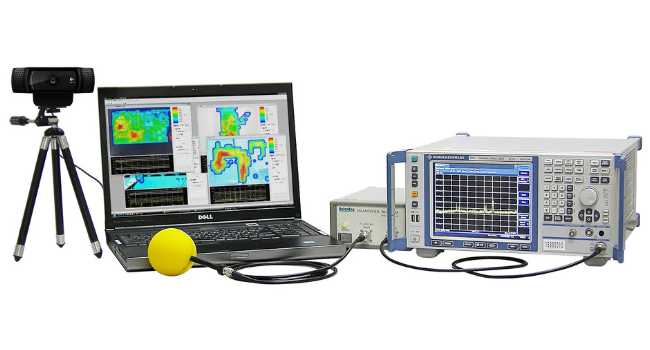AMK-DSA800 option provides various measurement functions, including T-Power (Total Power), ACP (Adjacent Channel Power), Chan Pwr (Channel Power), OBW (Occupied Bandwidth), EBW (Emission Bandwidth), C/N Ratio, Harmo Dist (Harmonic Distortion) and TOI (Third Order Intermodulation). For advanced measurement functions, the measurement mode can be single or continuous and you can control the measurement including Restart, Pause and Resume.
- T-Power
The instrument enters zero span mode and calculates the power within the time domain. The types of powers available include Peak, Average and RMS.
- ACP
Measure the Powers of the main channel and adjacent channels as well as the power difference between the main channel and each of the adjacent channels. When this function is enabled, the span and resolution bandwidth of the analyzer are adjusted to smaller values automatically.
- Chan Pwr
Measure the power and power spectral density within the specified channel bandwidth. When this function is enabled, the span and resolution bandwidth are automatically adjusted to smaller values.
- OBW
Integrate the power within the whole span and calculate the bandwidth occupied by this power according to the specified power ratio. The OBW function also indicates the difference between center frequency of the channel under measurement and the center frequency of the analyzer.
- EBW
Measure the bandwidth between two points on the signal which are X dB below the highest point within the span.
- C/N Ratio
Measure the powers of the carrier and noise with the specified bandwidths as well as their power ratio.
- Harmo Dist
Measure the power of each order of harmonic and THD (total harmonic distortion) of the carrier. The highest order of harmonic available is 10 and the fundamental wave amplitude must be greater than -50 dBm, or else the measurement will be invalid.
- TOI
Measure the parameters of the TOI production of two signals with the same amplitude and similar frequency. Those parameters include the frequencies and amplitude of the Base Lower, Base Upper, 3rd Order Lower and 3rd Order Upper signal, as well as the intercepts of both the Base Lower and the Base Upper.

































































































 FREE SHIPPING £75+
FREE SHIPPING £75+
 CELEBRATING 50+ YEARS
CELEBRATING 50+ YEARS
 PRICE MATCH GUARANTEE
PRICE MATCH GUARANTEE




